ECON1085: International Monetary Economics Report on UK Economy
VerifiedAdded on 2023/01/12
|6
|1202
|87
Report
AI Summary
This report provides an analysis of the UK's international monetary economics, focusing on the impact of Brexit on various economic factors. The report begins with a historical overview of the UK's economic development, highlighting key events such as the Industrial Revolution and the incorporation of Ireland. It then examines the current state of the UK economy, including the impact of Brexit on economic growth, trade, and tariff policies, and the fluctuation of economic indicators such as inflation and interest rates. The report further delves into the UK's balance of payments, debt, and fiscal policies, concluding that Brexit has significantly impacted the UK's economic growth. The report also discusses the exchange rate mechanism, purchasing power parity (PPP), and the application of the IS-LM-BP model to analyze capital flows, interest rate differentials, and the impact of political and health concerns on UK trade. Finally, the report references several academic sources to support its analysis.
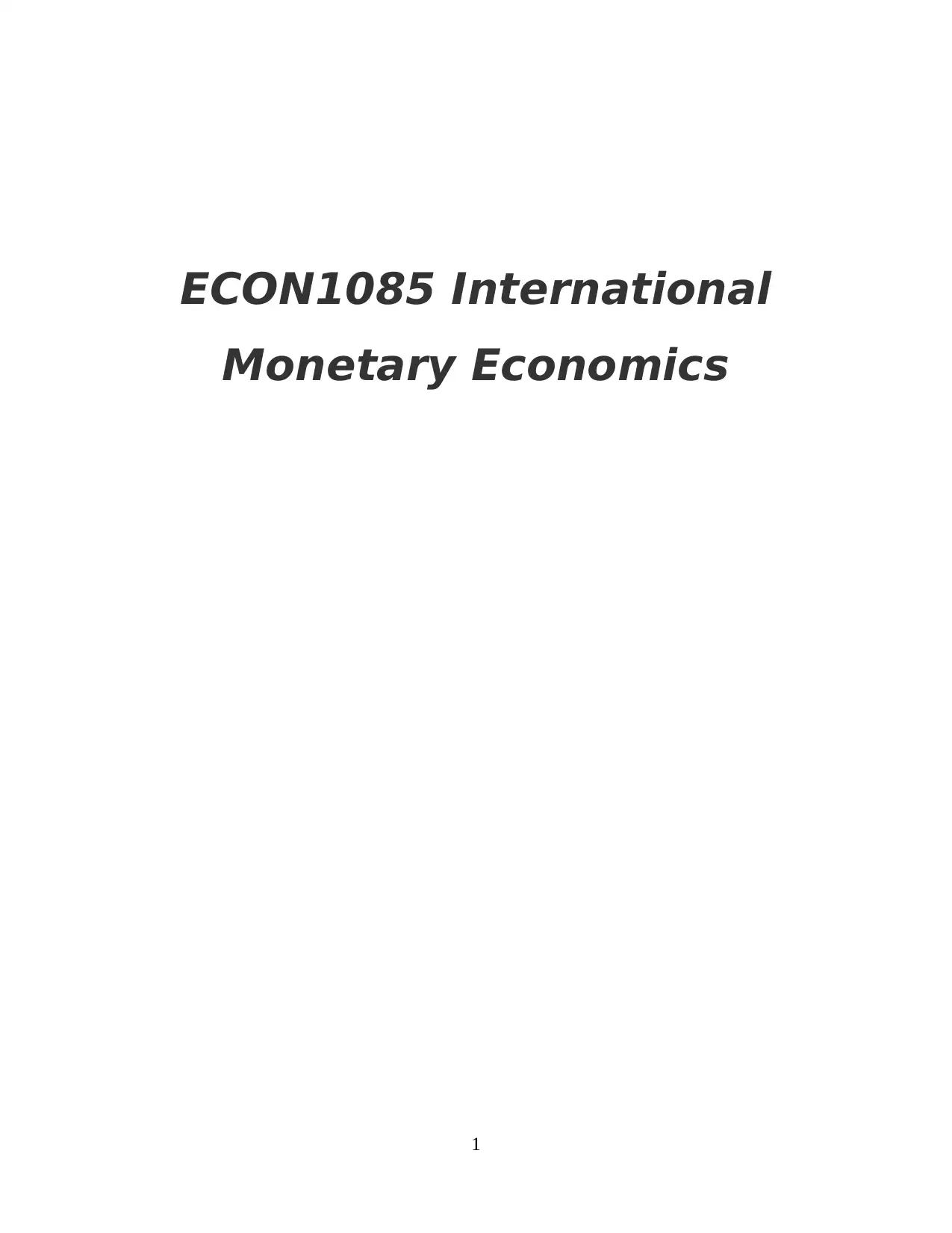
ECON1085 International
Monetary Economics
1
Monetary Economics
1
Paraphrase This Document
Need a fresh take? Get an instant paraphrase of this document with our AI Paraphraser
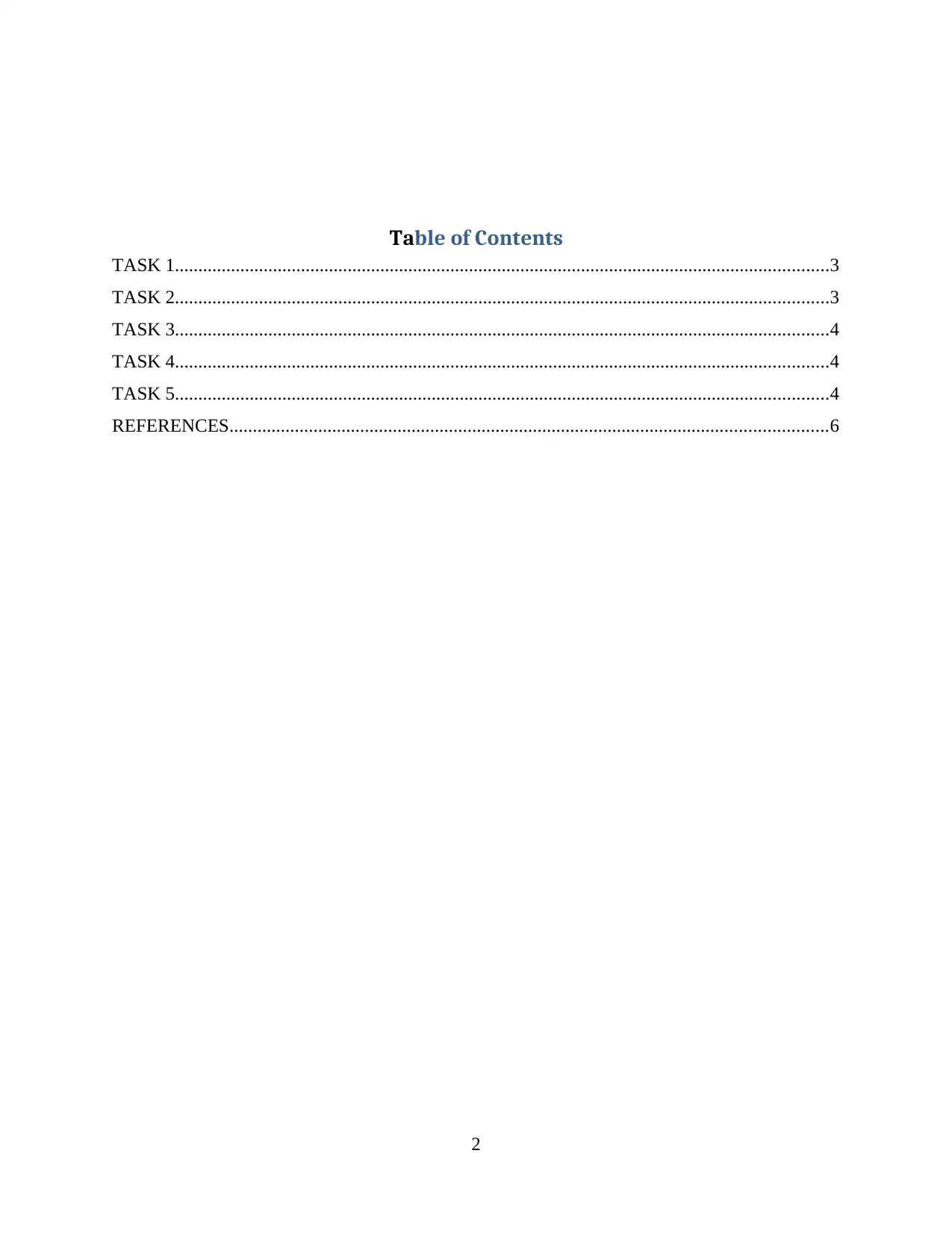
Table of Contents
TASK 1............................................................................................................................................3
TASK 2............................................................................................................................................3
TASK 3............................................................................................................................................4
TASK 4............................................................................................................................................4
TASK 5............................................................................................................................................4
REFERENCES................................................................................................................................6
2
TASK 1............................................................................................................................................3
TASK 2............................................................................................................................................3
TASK 3............................................................................................................................................4
TASK 4............................................................................................................................................4
TASK 5............................................................................................................................................4
REFERENCES................................................................................................................................6
2
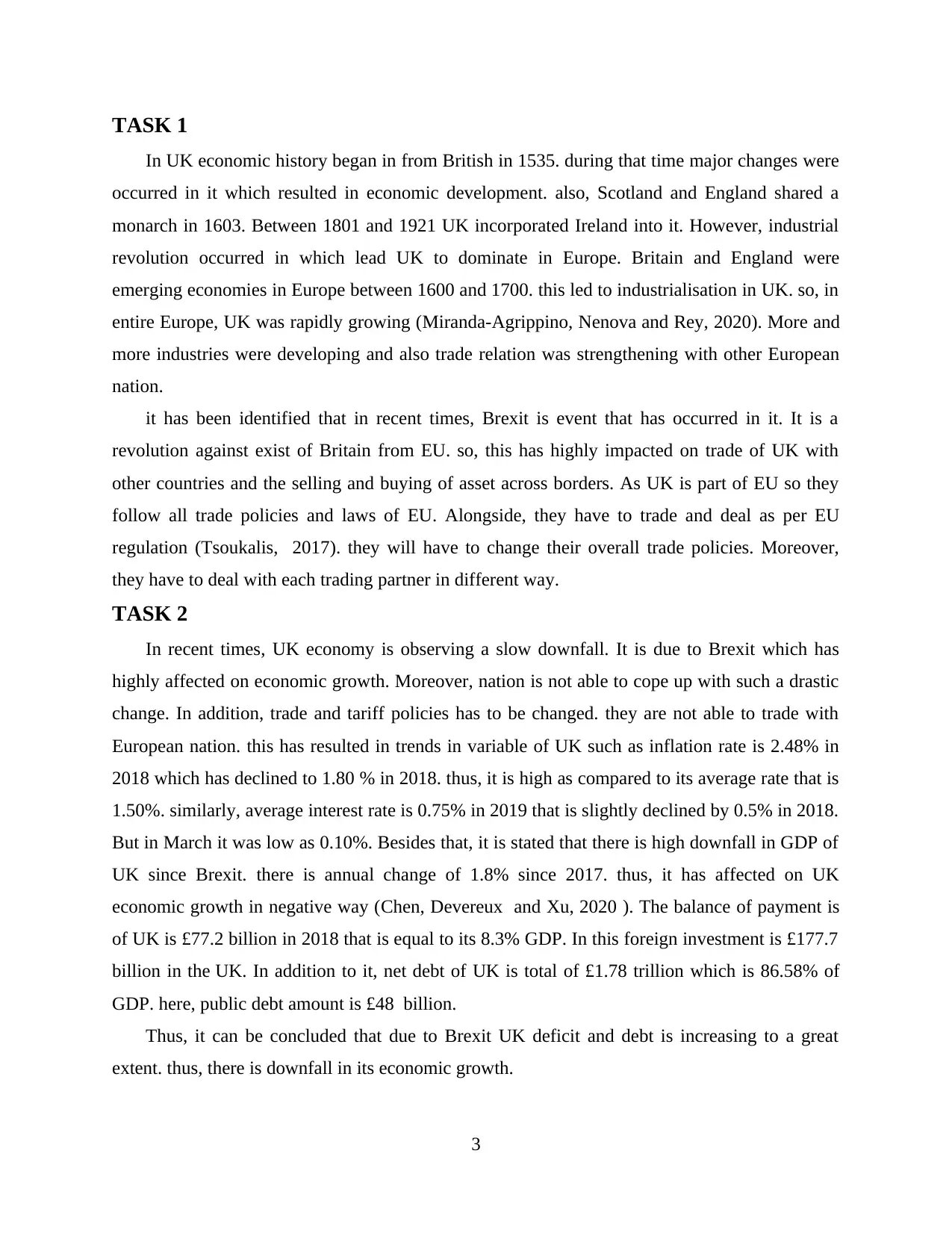
TASK 1
In UK economic history began in from British in 1535. during that time major changes were
occurred in it which resulted in economic development. also, Scotland and England shared a
monarch in 1603. Between 1801 and 1921 UK incorporated Ireland into it. However, industrial
revolution occurred in which lead UK to dominate in Europe. Britain and England were
emerging economies in Europe between 1600 and 1700. this led to industrialisation in UK. so, in
entire Europe, UK was rapidly growing (Miranda-Agrippino, Nenova and Rey, 2020). More and
more industries were developing and also trade relation was strengthening with other European
nation.
it has been identified that in recent times, Brexit is event that has occurred in it. It is a
revolution against exist of Britain from EU. so, this has highly impacted on trade of UK with
other countries and the selling and buying of asset across borders. As UK is part of EU so they
follow all trade policies and laws of EU. Alongside, they have to trade and deal as per EU
regulation (Tsoukalis, 2017). they will have to change their overall trade policies. Moreover,
they have to deal with each trading partner in different way.
TASK 2
In recent times, UK economy is observing a slow downfall. It is due to Brexit which has
highly affected on economic growth. Moreover, nation is not able to cope up with such a drastic
change. In addition, trade and tariff policies has to be changed. they are not able to trade with
European nation. this has resulted in trends in variable of UK such as inflation rate is 2.48% in
2018 which has declined to 1.80 % in 2018. thus, it is high as compared to its average rate that is
1.50%. similarly, average interest rate is 0.75% in 2019 that is slightly declined by 0.5% in 2018.
But in March it was low as 0.10%. Besides that, it is stated that there is high downfall in GDP of
UK since Brexit. there is annual change of 1.8% since 2017. thus, it has affected on UK
economic growth in negative way (Chen, Devereux and Xu, 2020 ). The balance of payment is
of UK is £77.2 billion in 2018 that is equal to its 8.3% GDP. In this foreign investment is £177.7
billion in the UK. In addition to it, net debt of UK is total of £1.78 trillion which is 86.58% of
GDP. here, public debt amount is £48 billion.
Thus, it can be concluded that due to Brexit UK deficit and debt is increasing to a great
extent. thus, there is downfall in its economic growth.
3
In UK economic history began in from British in 1535. during that time major changes were
occurred in it which resulted in economic development. also, Scotland and England shared a
monarch in 1603. Between 1801 and 1921 UK incorporated Ireland into it. However, industrial
revolution occurred in which lead UK to dominate in Europe. Britain and England were
emerging economies in Europe between 1600 and 1700. this led to industrialisation in UK. so, in
entire Europe, UK was rapidly growing (Miranda-Agrippino, Nenova and Rey, 2020). More and
more industries were developing and also trade relation was strengthening with other European
nation.
it has been identified that in recent times, Brexit is event that has occurred in it. It is a
revolution against exist of Britain from EU. so, this has highly impacted on trade of UK with
other countries and the selling and buying of asset across borders. As UK is part of EU so they
follow all trade policies and laws of EU. Alongside, they have to trade and deal as per EU
regulation (Tsoukalis, 2017). they will have to change their overall trade policies. Moreover,
they have to deal with each trading partner in different way.
TASK 2
In recent times, UK economy is observing a slow downfall. It is due to Brexit which has
highly affected on economic growth. Moreover, nation is not able to cope up with such a drastic
change. In addition, trade and tariff policies has to be changed. they are not able to trade with
European nation. this has resulted in trends in variable of UK such as inflation rate is 2.48% in
2018 which has declined to 1.80 % in 2018. thus, it is high as compared to its average rate that is
1.50%. similarly, average interest rate is 0.75% in 2019 that is slightly declined by 0.5% in 2018.
But in March it was low as 0.10%. Besides that, it is stated that there is high downfall in GDP of
UK since Brexit. there is annual change of 1.8% since 2017. thus, it has affected on UK
economic growth in negative way (Chen, Devereux and Xu, 2020 ). The balance of payment is
of UK is £77.2 billion in 2018 that is equal to its 8.3% GDP. In this foreign investment is £177.7
billion in the UK. In addition to it, net debt of UK is total of £1.78 trillion which is 86.58% of
GDP. here, public debt amount is £48 billion.
Thus, it can be concluded that due to Brexit UK deficit and debt is increasing to a great
extent. thus, there is downfall in its economic growth.
3
⊘ This is a preview!⊘
Do you want full access?
Subscribe today to unlock all pages.

Trusted by 1+ million students worldwide
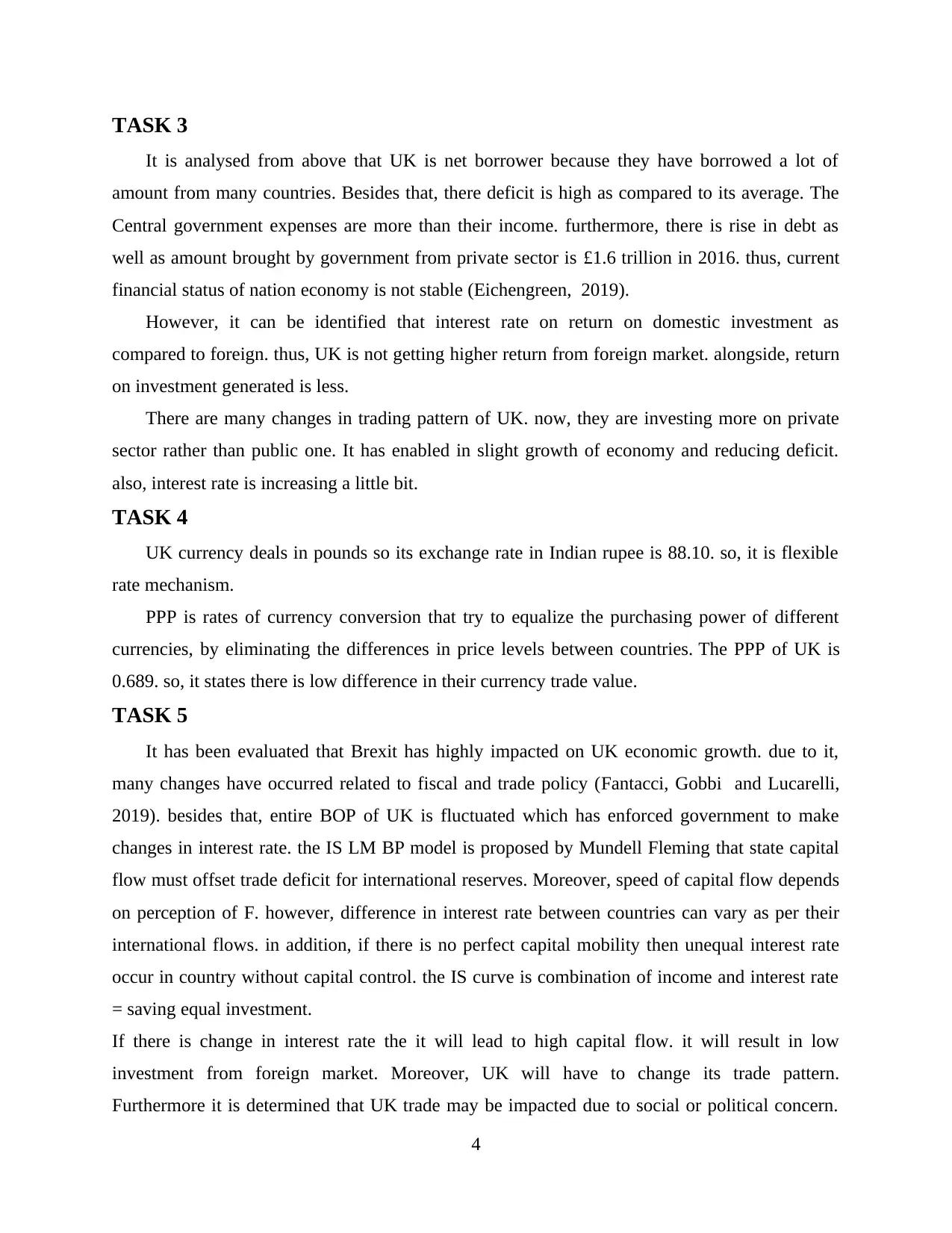
TASK 3
It is analysed from above that UK is net borrower because they have borrowed a lot of
amount from many countries. Besides that, there deficit is high as compared to its average. The
Central government expenses are more than their income. furthermore, there is rise in debt as
well as amount brought by government from private sector is £1.6 trillion in 2016. thus, current
financial status of nation economy is not stable (Eichengreen, 2019).
However, it can be identified that interest rate on return on domestic investment as
compared to foreign. thus, UK is not getting higher return from foreign market. alongside, return
on investment generated is less.
There are many changes in trading pattern of UK. now, they are investing more on private
sector rather than public one. It has enabled in slight growth of economy and reducing deficit.
also, interest rate is increasing a little bit.
TASK 4
UK currency deals in pounds so its exchange rate in Indian rupee is 88.10. so, it is flexible
rate mechanism.
PPP is rates of currency conversion that try to equalize the purchasing power of different
currencies, by eliminating the differences in price levels between countries. The PPP of UK is
0.689. so, it states there is low difference in their currency trade value.
TASK 5
It has been evaluated that Brexit has highly impacted on UK economic growth. due to it,
many changes have occurred related to fiscal and trade policy (Fantacci, Gobbi and Lucarelli,
2019). besides that, entire BOP of UK is fluctuated which has enforced government to make
changes in interest rate. the IS LM BP model is proposed by Mundell Fleming that state capital
flow must offset trade deficit for international reserves. Moreover, speed of capital flow depends
on perception of F. however, difference in interest rate between countries can vary as per their
international flows. in addition, if there is no perfect capital mobility then unequal interest rate
occur in country without capital control. the IS curve is combination of income and interest rate
= saving equal investment.
If there is change in interest rate the it will lead to high capital flow. it will result in low
investment from foreign market. Moreover, UK will have to change its trade pattern.
Furthermore it is determined that UK trade may be impacted due to social or political concern.
4
It is analysed from above that UK is net borrower because they have borrowed a lot of
amount from many countries. Besides that, there deficit is high as compared to its average. The
Central government expenses are more than their income. furthermore, there is rise in debt as
well as amount brought by government from private sector is £1.6 trillion in 2016. thus, current
financial status of nation economy is not stable (Eichengreen, 2019).
However, it can be identified that interest rate on return on domestic investment as
compared to foreign. thus, UK is not getting higher return from foreign market. alongside, return
on investment generated is less.
There are many changes in trading pattern of UK. now, they are investing more on private
sector rather than public one. It has enabled in slight growth of economy and reducing deficit.
also, interest rate is increasing a little bit.
TASK 4
UK currency deals in pounds so its exchange rate in Indian rupee is 88.10. so, it is flexible
rate mechanism.
PPP is rates of currency conversion that try to equalize the purchasing power of different
currencies, by eliminating the differences in price levels between countries. The PPP of UK is
0.689. so, it states there is low difference in their currency trade value.
TASK 5
It has been evaluated that Brexit has highly impacted on UK economic growth. due to it,
many changes have occurred related to fiscal and trade policy (Fantacci, Gobbi and Lucarelli,
2019). besides that, entire BOP of UK is fluctuated which has enforced government to make
changes in interest rate. the IS LM BP model is proposed by Mundell Fleming that state capital
flow must offset trade deficit for international reserves. Moreover, speed of capital flow depends
on perception of F. however, difference in interest rate between countries can vary as per their
international flows. in addition, if there is no perfect capital mobility then unequal interest rate
occur in country without capital control. the IS curve is combination of income and interest rate
= saving equal investment.
If there is change in interest rate the it will lead to high capital flow. it will result in low
investment from foreign market. Moreover, UK will have to change its trade pattern.
Furthermore it is determined that UK trade may be impacted due to social or political concern.
4
Paraphrase This Document
Need a fresh take? Get an instant paraphrase of this document with our AI Paraphraser

here, if there is change in political condition due to Brexit. then UK trade will be impacted in
negative way. the fiscal and monetary policies will change and interest rate will fluctuate (Farhi
and Maggiori, 2018). Likewise, if health concern emerges than PPP of UK will be affected. the
currency conversion rate will be low.
5
negative way. the fiscal and monetary policies will change and interest rate will fluctuate (Farhi
and Maggiori, 2018). Likewise, if health concern emerges than PPP of UK will be affected. the
currency conversion rate will be low.
5
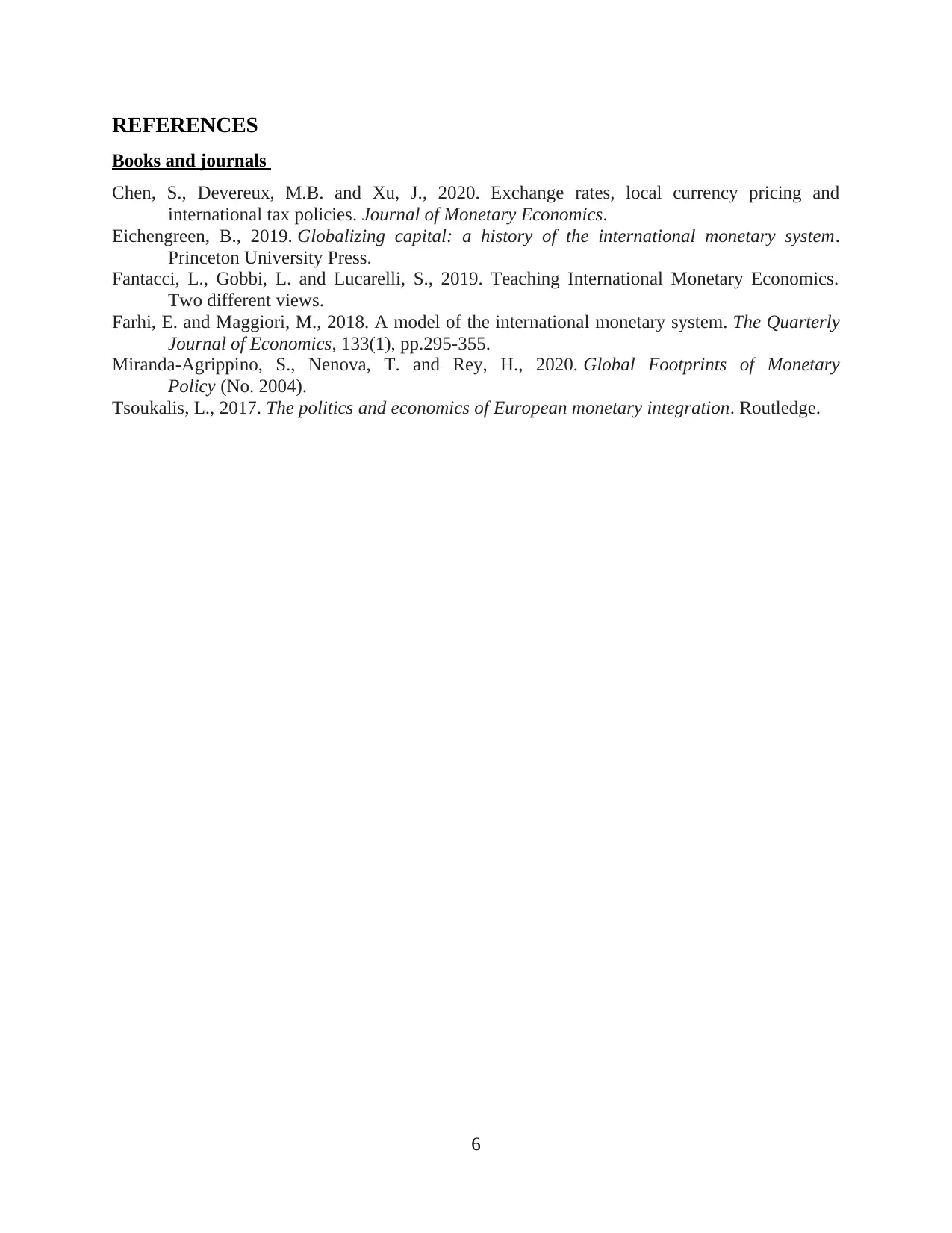
REFERENCES
Books and journals
Chen, S., Devereux, M.B. and Xu, J., 2020. Exchange rates, local currency pricing and
international tax policies. Journal of Monetary Economics.
Eichengreen, B., 2019. Globalizing capital: a history of the international monetary system.
Princeton University Press.
Fantacci, L., Gobbi, L. and Lucarelli, S., 2019. Teaching International Monetary Economics.
Two different views.
Farhi, E. and Maggiori, M., 2018. A model of the international monetary system. The Quarterly
Journal of Economics, 133(1), pp.295-355.
Miranda-Agrippino, S., Nenova, T. and Rey, H., 2020. Global Footprints of Monetary
Policy (No. 2004).
Tsoukalis, L., 2017. The politics and economics of European monetary integration. Routledge.
6
Books and journals
Chen, S., Devereux, M.B. and Xu, J., 2020. Exchange rates, local currency pricing and
international tax policies. Journal of Monetary Economics.
Eichengreen, B., 2019. Globalizing capital: a history of the international monetary system.
Princeton University Press.
Fantacci, L., Gobbi, L. and Lucarelli, S., 2019. Teaching International Monetary Economics.
Two different views.
Farhi, E. and Maggiori, M., 2018. A model of the international monetary system. The Quarterly
Journal of Economics, 133(1), pp.295-355.
Miranda-Agrippino, S., Nenova, T. and Rey, H., 2020. Global Footprints of Monetary
Policy (No. 2004).
Tsoukalis, L., 2017. The politics and economics of European monetary integration. Routledge.
6
⊘ This is a preview!⊘
Do you want full access?
Subscribe today to unlock all pages.

Trusted by 1+ million students worldwide
1 out of 6
Related Documents
Your All-in-One AI-Powered Toolkit for Academic Success.
+13062052269
info@desklib.com
Available 24*7 on WhatsApp / Email
![[object Object]](/_next/static/media/star-bottom.7253800d.svg)
Unlock your academic potential
Copyright © 2020–2025 A2Z Services. All Rights Reserved. Developed and managed by ZUCOL.





